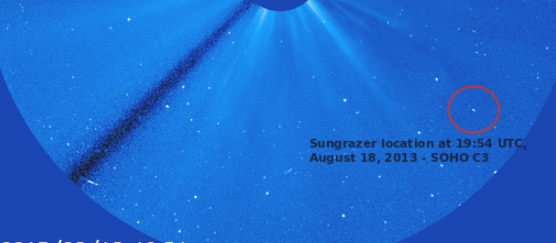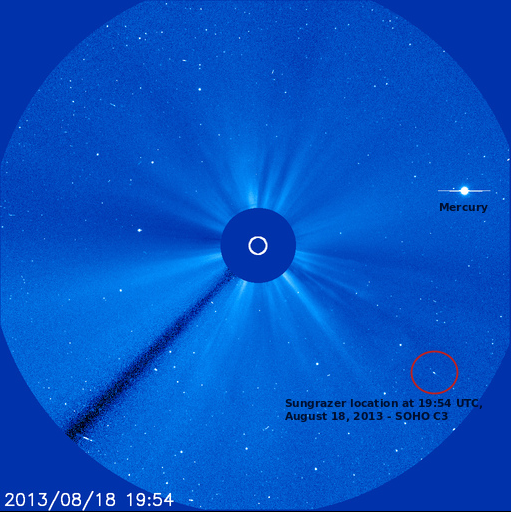Sungrazing comet visible on SOHO Lasco C3 imagery today

A small comet is diving toward the Sun today, August 19, 2013 and is visible on SOHO Lasco C3 imagery. It entered visual field of Lasco C3 coronagraph at 07:54 UTC on August 18th.
The comet belongs to Kreutz Sungrazer family. Those comets are characterized by orbits taking them extremely close to the Sun at perihelion. They are believed to be fragments of one large comet that broke up several centuries ago and are named for German astronomer Heinrich Kreutz, who first demonstrated that they were related.
See the beginning of its death plunge on the video below. M3.3 solar flare from August 17th is also caught on video.

Update:
Death plunge, disintegration and farside CME:


Featured image: NASA SOHO Lasco C3


Can you find some information about an object in SOHO LASCO C3 on August 20 2013, 19:30 to the bottom left of the sun. Venus has light coming from the sides as expected and another object to the left of the sun but smaller and moving slow, but this object has the same light emitted but only for 2 frames and it is gone. If distance is relative to that of Venus and other object, wouldn’t that mean that this object is in our solar system?